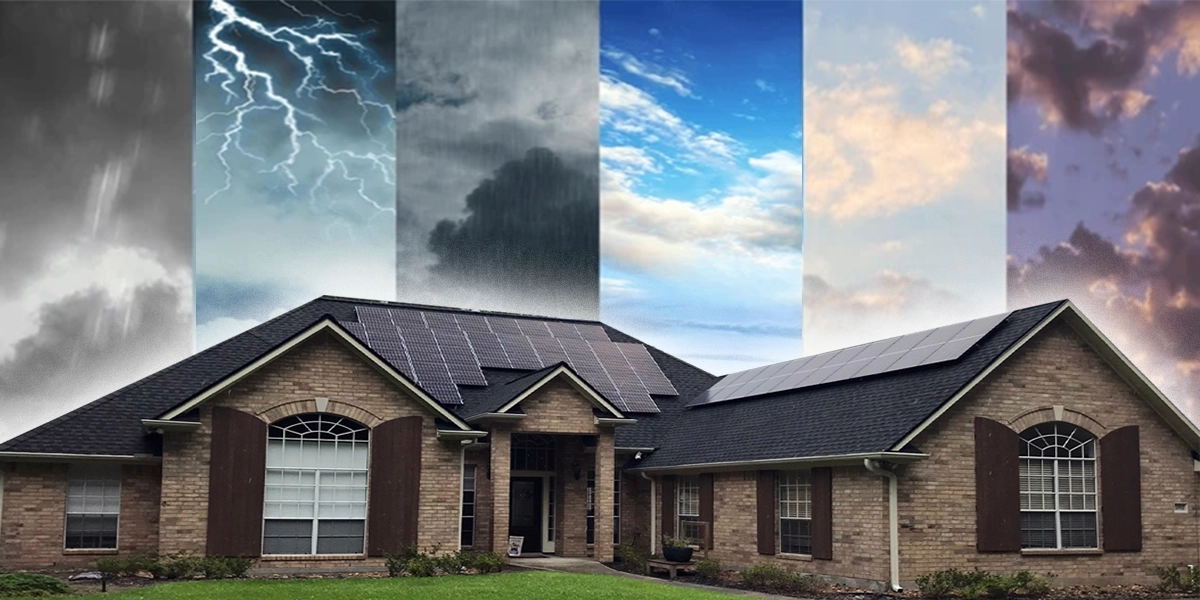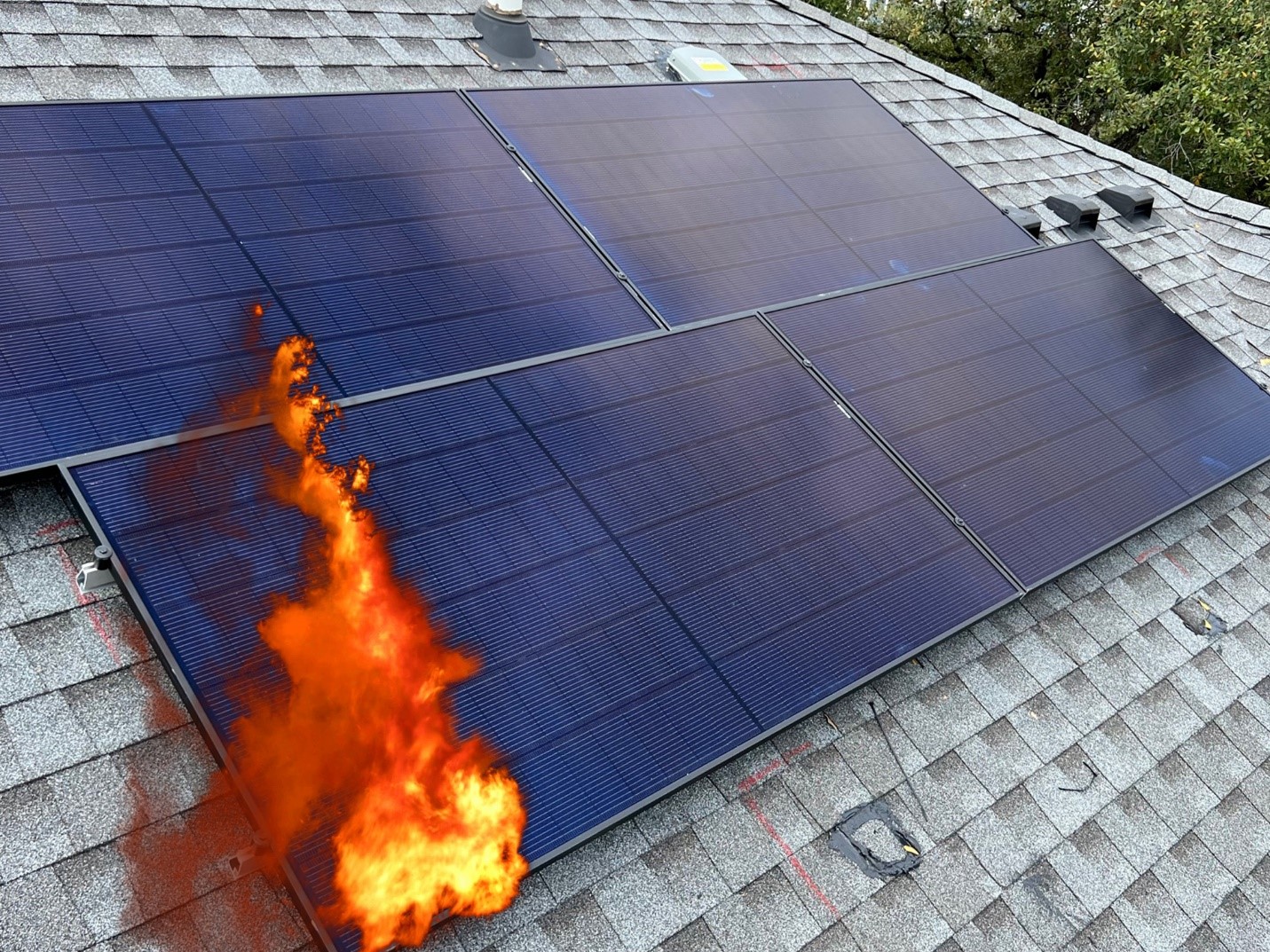- Published On:
Can Hail Damage Solar Panels?
Useful Tips to Protect Your PV
Hail damage is one of the main concerns for customers considering installing home solar panels in the United States. Luckily, solar panels have a long lifespan. They are capable of withstanding most storms. Usually, hail cannot damage solar panels. You may be wondering what happens when hail strikes your solar panels.
To learn more about how hail affects solar panels and what to do if they get hit, continue reading.

How does hail impact solar panels?
Although solar panels consist of tempered glass, they can still tolerate a bit of pressure before cracking. Many solar panel brands test their products to ensure they can withstand hailstones up to one inch in diameter. In most cases, your solar panels will act as a shield during most hail storms, protecting your roof from hail damage.
Like, a massive hailstorm ripped through the Colorado foothills in May 2017 and destroyed thousands of homes and other buildings. This Colorado Hail Storm damaged only one solar panel out of 3,000. This is the best example to determine the durability of solar panels.
Why is hail a problem for solar panels?
However, the hailstone size and weight are not such major factors in determining the impacts of hail damage on solar panels. Rather, the speed of stones is considerable. Hail travels at a speed of 10 to 75 miles per hour (mph). Larger hailstones have the potential to damage solar panels more severely since they travel at higher speeds. Hail is a problem for solar panels because:
Damage Solar Equipment:
The high-quality solar panels can withstand hail damage due to the durable layer of tempered glass, which can resist strong hits. Tempered glass has a high safety rating and can be used outside for many years because it can withstand heavy hail.
There are conflicting reports of the impacts of hail damage on solar panels. While some homeowners point out that there is no damage at all, others bring attention to minor surface scratches and cracks. The impact of hailstones striking the panel’s surface can damage interior solar cells and components, even if there are little to no outward breaks.
Solar Panel Performance Reduction:
What happens when solar panels’ surface cracks during a hailstorm? Even solar panels with surface cracks can still function. But there’s a chance that this may result in less solar output. There’s a chance the panel won’t run at its highest voltage, output, or efficiency.
This is because, over time, cracks may allow water, moisture, or debris to become trapped inside the panels, leading to early breakdown or failure. Additionally, hot patches from a broken surface may ignite fires or damage interior parts. However, if you identify the hail damage early, there is a probability that cracks will not impact internal components or affect the performance of the solar energy system.
Solar Panels Warranty Limitations:
Photovoltaic (PV) modules are vulnerable to hail damage as most warranties do not cover such damage. Hail falls within the unusual category of “environmental factors” in solar warranties, the coverage’s parameters have limits to particular circumstances or occurrences. You should make sure whether and to what extent your warranty covers hail damage if you live in an area like the Midwest where hailstorms are common.
Also, you should check your homeowner’s solar insurance for hail damage coverage if it is not covered under your solar panel warranty.
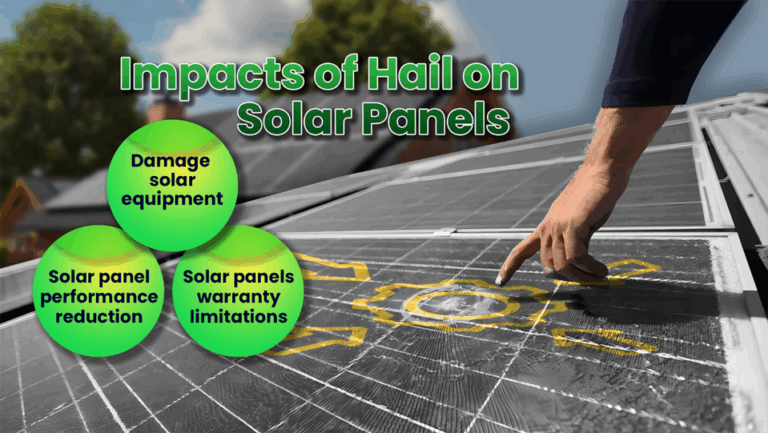
How to analyze solar panel hail damage?
After a hailstorm, it’s a good idea for you to check your solar panels for hail damage so that your home can keep reaping the benefits of solar energy.
Check Your Solar Inverter
Initially, you need to examine your inverter after a hailstorm as it may detect hail damage impacts on your solar system. Look at the inverter’s display panel for any red lights, fault messages such as “ground fault” or “earth fault,” or any evidence of power generation. If none of these are there may be a problem. For more information, it’s best to get in touch with your solar installer.
Conduct a Visual Inspection
After analyzing your inverter, you should inspect your solar panels to detect hail damage. You will be able to identify cracks and breakage from a distance. In case of any damage, there may be a dangerous voltage leak.
Contact a Certified Solar Installer
Although hail damage to solar panels is rare, you will need to get in touch with the best solar installer like SolarSME to replace your damaged solar panels. Usually, home and property insurance cover this expense, but you should check with your insurance company as different companies have different policies.
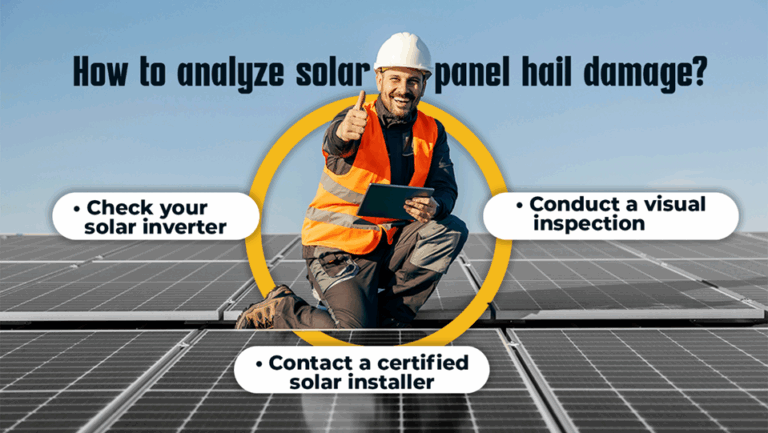
How to protect your solar panels from hail damage?
To protect your solar panels from hail damage, you can take the following steps:
Stay Up to Date with Weather Conditions
Due to climate change, weather patterns are changing constantly. So, it is a good idea to keep yourself updated on local weather patterns and the potential of large hailstorms. If you reside in a region where hailstorms occur frequently, be careful.
Invest in High-Quality Solar Panels
If hailstorms are frequent in your area, you should invest in the best solar panels. In the long run, it will be worthwhile even though it may initially cost more. To guarantee that your panels can withstand the storm, use panels with a high wind and snow load.
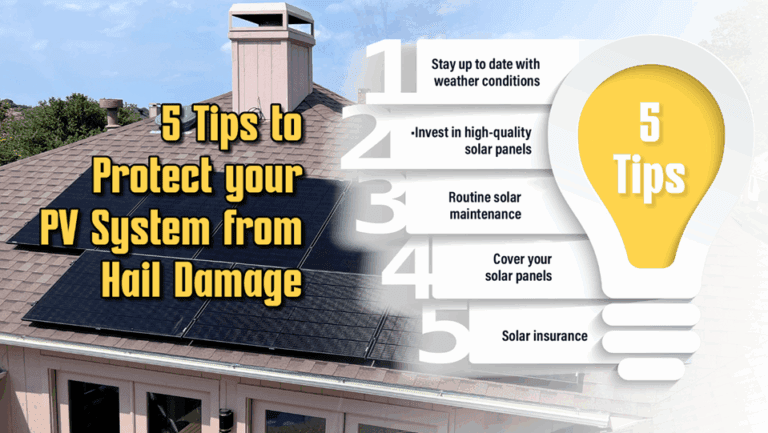
Routine Solar Maintenance
Your PV system will remain in good working condition with routine solar maintenance and inspections. Additionally, inspections will ensure that you detect any damage early to a storm. Extreme weather conditions increase the risk of damage to panels that are already defective.
Cover Your Solar Panels
One of the best ways to protect your system from hail damage is with temporary solar panel coverings. The common types of solar panel cover include hard shells and cushioned covers.
Hardshell covers although require special mounting, they are beneficial as they do not absorb rain and moisture. Hailstorms can bring rain, so having a hard-shell cover is an excellent idea for protection. Compared to a hard shell, a padded cover is softer and more flexible. The impact of hailstones striking your panels is reduced with this kind of protection.
Your solar panels don’t need to be covered during every hailstorm or thunderstorm. After all, quality panels have undergone testing to ensure they can survive small to medium-sized hail. It makes sense to proactively cover your panels for protection before the storm if you live in an area that experiences heavy hail.
Solar Insurance
Verify that your solar panels are protected from hailstorms by contacting the manufacturer of your panels and your insurance provider. Though policies vary, most home insurance plans include coverage for severe weather, and many even include your solar panels as part of the roof. To find out if they provide replacements and repairs for damaged panels, you can also review the manufacturer’s warranty on your panels.
In most places around the world, hail is rare and unusual. However, some areas often experience severe hailstorms, which can cause solar panels hail damage. While small hail usually isn’t a big issue, large hailstones can damage even the strongest panels. To protect your solar panels, it’s important to regularly check and maintain them, keep an eye on weather forecasts, and understand your insurance policies and warranties.
Get a FREE quote NOW & estimate your solar savings.
Related Articles:
Although solar panels are designed to withstand harsh weather conditions like storms, hurricanes, and hail, however, their power generation may significantly vary depending on the environment. Explore how weather impacts on your system performance.
The amount of sunlight that strikes the earth’s surface in an hour and a half is enough to handle the entire world’s energy consumption for a year.
In the United States, if you reside in a subdivision, planned community, or a building, you may be a part of the Homeowners Association, also known as HOA.

